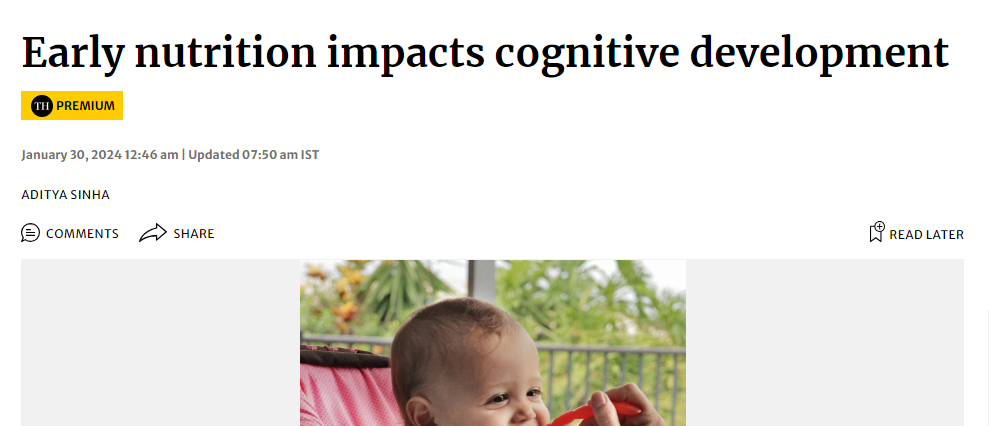1. Exploring Humboldt's Enigma and its Implications for India
Introduction
The exploration of where biodiversity is concentrated has been a longstanding fascination for explorers and naturalists. One notable individual who endeavored to unravel this mystery was Alexander von Humboldt.
Humboldt’s Contributions
Alexander von Humboldt, a polymath of the 18th century, meticulously documented a wide array of natural observations. He proposed a correlation between temperature, altitude, humidity, and the distribution of species.
Exploration of Mountains
In the course of his South American expedition, Humboldt extensively examined the distribution of plants on mountains, observing variations corresponding to changes in elevation.
Chimborazo Mountain Example
Using Chimborazo Mountain in Ecuador as an illustrative case, Humboldt demonstrated the concept of mountain diversity and its implications.
Understanding Humboldt’s Enigma
In tropical regions, higher solar energy fosters greater primary productivity and biodiversity, creating ecological niches. However, mountains, situated beyond the tropics, present a challenge to this norm, leading to what is known as Humboldt’s enigma.
Factors Influencing Biodiversity
Mountain diversity is primarily driven by Earth’s history, geography, and climate. Geological processes, such as uplifts, contribute to the creation of new habitats and the emergence of new species.
Climatologically stable mountains act as both ‘cradles’ and ‘museums,’ preserving species over time. Examples like the Shola Sky Islands in the Western Ghats showcase these characteristics.
Anomaly in the Eastern Himalaya
The Eastern Himalaya region challenges the conventional paradigm of tropical biodiversity by exhibiting exceptional diversity.
Factors such as climate dissimilarity and geological heterogeneity contribute to the high biodiversity observed in this area.
Unraveling the Complexity
Diversification and the unresolved enigma posed by Humboldt’s observations are influenced by numerous factors in different regions, resulting in a multitude of hypotheses.
However, the lack of fine-scale species occurrence data poses a challenge to providing precise explanations.
Research Imperatives
There is a pressing need for more extensive research, especially in under-studied areas like those in India.
Utilizing genetic studies is crucial to gaining a deeper understanding of true biodiversity.
Strengthening initiatives such as the National Mission on Himalayan Studies and Biodiversity is essential to support foundational research.
In Conclusion
Humboldt’s enigma serves as a crucial aspect of understanding mountain biodiversity, presenting opportunities for further study and insights into broader issues of global climate and landscape change.
2. Changes in Central Government Subsidies Over the Past Few Years
Context:
In the initial term of the current government, there was a notable decrease in the government’s subsidy burden despite an increase in the delivery of essential services through various Central Government schemes.
However, the second term has witnessed a significant rise in subsidies related to food and fertilizer, attributed to the impact of the COVID-19 pandemic and ongoing conflicts.
Anticipated upcoming elections are expected to further escalate the subsidy burden on the central government. Here is an overview of the subsidy trends in recent times:
Evolution of Subsidies in Recent Times
Period between 2014-19:
- During this period, numerous schemes were launched to ensure universal access to housing (PMA&-U & PMAY-G), toilets (SBM), drinking water (JJM), bank accounts (PMJDY), electricity, and cooking gas (Ujjwala).
- This phase, labeled as ‘New Welfarism,’ led to increased access to essential goods and services.
- Despite this, the center’s subsidy bill decreased both in absolute and relative terms. The outgo on food and fertilizer subsidy dropped from 2.2% of GDP to around 1% in 2018-19.
- Considering expenditure on welfare schemes like MGNREGA and PM-KISAN, the decline was from 2.5% of GDP to 1.4%.
Reasons for decline in GDP between 2014-19:
Easing of international crude prices: The cost of crude imported by Indian refiners dropped, leading to a decline in the subsidy burden.
Removal of subsidies on petrol and diesel, limited to LPG for cooking gas, resulted in increased excise duties, contributing to increased taxes for the government.
Period between 2019-2023:
Major subsidies increased from 1% of GDP in 2018-19 to 3.6% of GDP in 2020-21. Including expenditures on MGNREGA and PM-KISAN, the total outgo rose from 1.4% of GDP to 4.4% of GDP.
Drivers of increase in subsidies between 2019-23:
- The central government’s decision to fully provide for food and fertilizer subsidies.
- Government expenditure to address pandemic-induced economic distress.
- Impact of the Russia-Ukraine War, causing a surge in international fertilizer prices.
Way forward:
To address the rising subsidy burden, suggestions include revising issue prices for wheat and rice under the Public Distribution System (PDS), adjusting issue prices for urea at regular intervals, and emphasizing Direct Benefit Transfers for subsidy efficiency.
Additionally, there is a recommendation to shift focus towards income support schemes like PM-Kisan rather than subsidizing goods and services.
3. Impact of Early Nutrition on Cognitive Development
Context:
- It is essential to comprehend the profound connection between early nutrition, cognitive development, and educational outcomes.
A recent study sheds light on the impact of childhood stunting on cognitive skills, emphasizing the necessity for effective policies to improve educational results, particularly in low- and middle-income countries like India.
Background and Challenges:
While the long-term consequences of early childhood stunting on education are recognized, the study specifies the affected cognitive skills: working memory, inhibitory control, long-term memory, and implicit learning.
The focus shifts from conventional achievement tests to encompass a broader understanding of cognitive abilities.
Research Challenges: The study addresses a common research challenge, which often concentrates on specific cognitive achievement test scores, potentially neglecting the intricate interplay of cognitive skills and access to education.
Nutrition and Skills: Cognitive skills, being less reliant on educational investments, offer a more comprehensive insight into the repercussions of early under-nutrition on later cognitive abilities.
Key Findings and India’s Perspective:
- Negative Relationship: The study establishes a negative correlation between stunting at age 5 and executive functions measured in subsequent years. The impact on working memory, influenced by vocabulary development, becomes evident as early as age 5, underscoring the crucial importance of early childhood nutrition.
- Women’s Status: In India, women’s height and educational attainment significantly predict child stunting, emphasizing the necessity for interventions that address these factors.
- Policy Measures: Initiatives like Poshan Abhiyaan and the Integrated Child Development Services, which concentrate on holistic development and nutrition, are designed to tackle the issue of stunting in high-burden districts.
Strategies for Improvement:
- Promoting Early Breastfeeding: Expanding programs such as the Mother’s Absolute Affection Programme to provide more extensive lactation support. Utilizing mobile technology to educate mothers on the significance of exclusive breastfeeding in the initial six months.
- Diversifying Children’s Diet: Implementing and scaling up community-based complementary feeding programs. Educating parents about the importance of incorporating diverse, locally available, nutrient-rich foods into a child’s diet after six months.
Enhancing Anganwadi Workforce: Introducing an additional Anganwadi worker at each center to double preschool instructional time. Studies suggest that this approach can enhance math and language scores, decrease stunting, and generate substantial employment opportunities.
4. Sighting of Indian Grey Wolf in Chambal after a Two-Decade Absence
Introduction
The recent discovery of an endangered Indian grey wolf within the expansive confines of the National Chambal Sanctuary in Etawah, marking the first sighting in two decades, has generated significant enthusiasm among wildlife enthusiasts and experts.
Indian Grey Wolf Overview
- Scientific Name: Canis lupus pallipes
- Climate Adaptation: Flourishes in warmer conditions
- Social Behavior: Moves in smaller packs and exhibits reduced vocalization
- Physical Traits: Size ranges between Tibetan and Arabian wolves
- Preferred Habitat: Thrives in scrublands, grasslands, and semi-arid regions
- Distribution: Found from the Indian subcontinent to Israel, with approximately 3,000 individuals in India
- IUCN Listing: Classified as Least Concern
- Legal Protection: Listed under Schedule I of the Wildlife Act and included in CITES Appendix I
Major Threats: Challenges include habitat loss and the decline in prey population.






